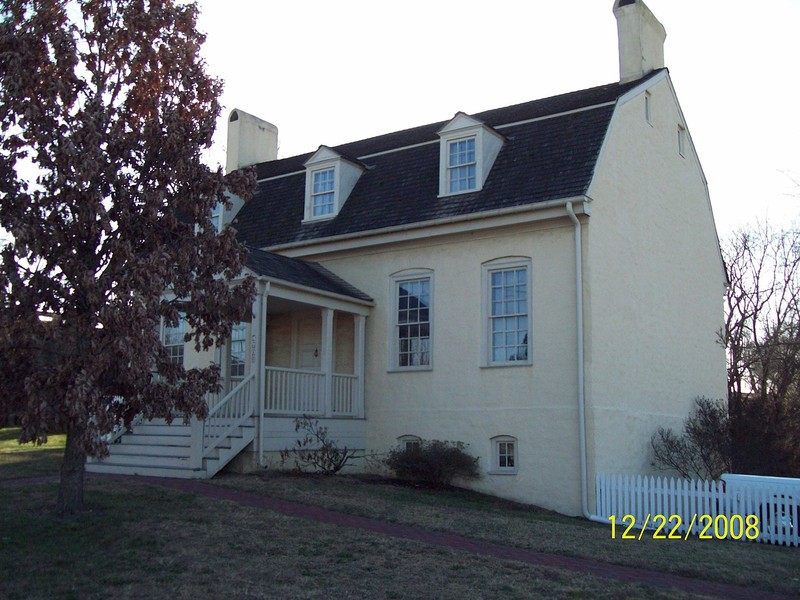William Hilleary House (Hilleary-Magruder House)
Introduction
Text-to-speech Audio
Images
William Hilleary House, Bladensburg, Maryland, December 2008

Backstory and Context
Text-to-speech Audio
The William Hilleary House, constructed in 1742, stands as the only 18th-century stone, gambrel-roofed house in Prince George's County. Several prominent figures resided in the house, including numerous doctors. The home also enjoys a connection, directly or indirectly, to four wars: The Seven Years'Years' War, The Revolutionary War, The War of 1812, and the U.S. Civil War. For more than a century, the house served as the home to an abundance of owners, many of whom enjoyed a unique historical story.
1742 William Hilleary purchased the lot and built the now-historic house, and lived there until 1765 when Richard Henderson purchased the property. Henderson, a prominent merchant and land speculator, served as a County Justice. He also gained fame for his ""paper wars"" with Levi Gantt and Alexander Clagett in newspapers. George Washington's diary, May 9, 1787, states that he dined with Henderson in the Bladensburg home.
Henderson sold the property in 1793 to his business partner, Major/Doctor David Ross, Jr., who briefly served as a commander in the Continental Army during the Revolutionary War. He was also the son of surgeon and merchant Dr. David Ross (who had died in 1778). Ross Sr. was an original inhabitant of Bladensburg, had served as a Town Commissioner, and from 1750 to 1759 had been a Justice of the County Court. Ross Sr. also took the role of ""Agent Victualer"" for the Maryland troops during the Seven Years'Years' War (French & Indian War). Ross, Jr. lived in the home until 1799.
For most of the nineteenth century, the home enjoyed many owners, including Howarton Cross, a veteran of the Battle of Bladensburg. Rumor has it that the home served as an ipso facto hospital for fallen British troops during the War of 1812 (The Battle of Bladensburg took place in 1814). Owners or occupants during the 19th century also included several doctors such as Dr. Alexander Mitchell, Leonard M. Deakins, Dr. William Draine and Dr. Benjamin Day. As well, Dr. Archibald Magruder owned the home from 1853 - 1863 and treated Confederate soldiers after hours; Federal authorities later arrested him.
The town struggled to remain significant during the first half of the twentieth century as it no longer stood as a port city, the heart of the tobacco trade, or find any real success in the post-industrial world. Also, flooding proved problematic. By the 1950s, a plan existed to demolish the old home, but it was saved and later restored during the 1970s and early 1980s, and subsequently transformed into a professional office building.
Sources
Burritt, Lane. The Historic Hilleary-Magruder House. Bladensburg, Maryland: Prince George's Heritage, 2013. https://issuu.com/pgheritage/docs/magruder_house
Cook, Margaret W. and Ruth Lockard. "Nomination Form: William Hilleary House (Magruder House or Old Stone House). National Register of Historic Places. nps.gov. April, 2007. https://npgallery.nps.gov/GetAsset/07a2babc-ce2e-4dfd-a775-18a9690dc137
Hughes, Laura H, Laura V. Trieschmann, Paul Singh, Latishia Allen, and Andrea Schoenfeld. "Historical Research Report For the Market Master's Master's House, Magruder House, and the George Washington House: Bladensburg, Prince George's George's County, Maryland." Maryland State Highway Administration. princegeorges1812.org. October, 2009. http://www.princegeorges1812.org/Bladensburg/bladensburg-history/Bladensburg_Historical_Research_Project.pdf
By Pubdog (talk) - I created this work entirely by myself.Transferred from en.wikipedia, Public Domain, https://commons.wikimedia.org/w/index.php?curid=16990311
